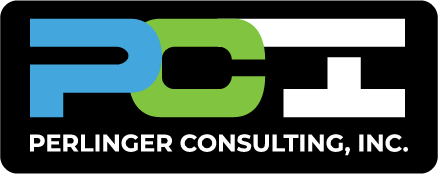Small Business Finanaces use 50/30/20 Bookkeeping
A Tale of Two Businesses
Once upon a time in the bustling town of Millville, there were two small businesses, each with a dream to flourish. ‘Becky’s Bakery’, known for its heavenly pastries, and ‘Tom’s Tech’, a haven for gadget enthusiasts.
Both started their journeys with passion, but while Becky’s business blossomed, Tom’s struggled. The difference? Becky discovered a bookkeeping technique that transformed her financial management, while Tom was still lost in a sea of numbers.
This tale is not unique to Millville. Across the globe, small businesses face the challenge of effective financial management. But what if I told you that a simple bookkeeping technique could be the compass guiding your business towards financial success? Welcome to the world of the 50/30/20 rule.

Small Business Finanaces use 50/30/20 Bookkeeping
Technique Explained:
The 50/30/20 rule is a straightforward method to manage your business finances. Here’s how it works:
- 50% for Needs: Allocate 50% of your business income to essential expenses. According to the U.S. Small Business Administration, small businesses should expect operating expenses to account for around 50% of their total budget.
- 30% for Wants: 30% goes towards things that could help your business but aren’t crucial. A survey by Clutch.co found that successful small businesses allocate approximately 30% of their budget to growth and development activities, such as marketing and innovation.
- 20% for Savings or Debt Repayment: The remaining 20% should be reserved for savings or paying off debt. A study by Bank of America revealed that only 52% of small businesses maintain a regular savings habit. This segment of your budget ensures financial resilience.
Why This Technique Works
- Simplicity: The beauty of the 50/30/20 rule lies in its simplicity. It’s easy to understand and implement, which is crucial for small businesses that might not have dedicated finance teams.
- Flexibility: This method offers flexibility, accommodating fluctuations in income, which is a common scenario in small businesses.
- Financial Health: It encourages a balanced approach to spending and saving, crucial for the long-term sustainability of a business.
Implementing the 50/30/20 Rule in Your Business
- Step 1: Start by categorizing your business expenses into ‘needs’, ‘wants’, and ‘savings/debt repayment’.
- Step 2: Analyze your current spending and adjust to fit the 50/30/20 framework.
- Step 3: Regularly review your budget categories and adjust as your business grows and evolves.
Digging Deeper: Maximizing Efficiency with the 50/30/20 Rule
Optimizing ‘Needs’ – Streamlined Accounting and Automated Solutions
Small businesses often struggle with managing their ‘needs’ efficiently. By integrating automated accounting solutions, businesses can streamline their essential financial processes. Automation in accounts payable and receivable can reduce manual errors and save time. Accurate accounting services are crucial here, and leveraging technology like QuickBooks can be a game-changer. This not only aligns with the 50% allocation for needs but also ensures that the spending in this category is as efficient and effective as possible.
Enhancing ‘Wants’ – Strategic Investments for Growth
Allocating 30% to ‘wants’ provides a strategic opportunity for growth. This can include investing in marketing strategies, QuickBooks training for staff, or advanced bookkeeping services. For instance, engaging in Colorado QuickBooks consulting services can equip your team with the skills to manage finances more effectively, turning a ‘want’ into a strategic investment. Furthermore, exploring accounts payable automation solutions can streamline your financial operations, contributing to business growth.
Securing the Future – Smart Savings and Debt Management
The 20% reserved for savings or debt repayment is your safety net. For small businesses, this could mean setting aside funds for future investments or unexpected expenses. Maintaining a monthly savings habit, as advised by banking experts, is vital for financial resilience. Small business owners should consider consulting with a bookkeeping service or an accounts payable specialist to devise effective strategies for savings and debt management.
Advanced Tips:
- Regular Financial Reviews: Schedule monthly or quarterly reviews to analyze your financial health and adjust the budget as needed.
- Tax Efficiency: Work with bookkeeping and tax services to ensure your financial planning is tax-efficient, maximizing your savings.
- Professional Training: Invest in bookkeeping training online for you and your team to stay updated on the latest financial management practices.
A Path to Financial Clarity
Your business can achieve financial clarity and growth by adopting the 50/30/20 bookkeeping technique. It’s more than a method; it’s a pathway to understanding and maximizing your business’s financial potential. Embrace this technique and write your own success story.
Sources:
- U.S. Small Business Administration
- Clutch.co, “Small Business Budgeting Survey”
- Bank of America, “Small Business Savings Study”
